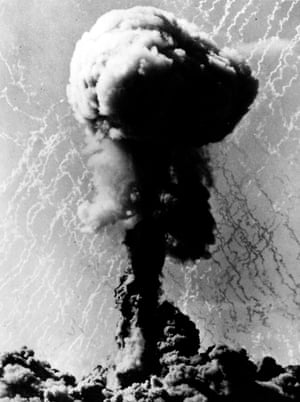|
Severe, lifelong, and trans-generational harm has resulted not only from the nuclear bombings of Hiroshima and Nagasaki, but also from the testing, development, and production of nuclear weapons. Late effects and long-lived environmental contamination will continue to create new victims. This damage has disproportionately affected women and indigenous communities—the reflections of this in the revised preamble are important. For all of these reasons, including provisions on victim assistance and environmental remediation in the nuclear ban treaty is important.
Some delegations such as Egypt, Iran, Cuba, and Viet Nam, amongst others, argued that the primary responsibility for victim assistance should lie with the states that created the victims in the first place. Malaysia argued international customary law supports this, including the Articles on the Responsibility of States for Internationally Wrongful Acts. However, as other states and civil society organisations pointed out, the primary responsibility for ensuring that victims’ rights are respected and needs are met lies with the state in whose jurisdiction or control they live or work. This is consistent with states’ sovereignty, general human rights obligations, and responsibilities towards any of their citizens.
This approach does not mean that affected states must face these issues alone or be solely responsible for addressing them. Establishing strong international cooperation and assistance provisions is crucial to helping affected states meet their obligations to victims, and in order to establish responsibility for these matters amongst all states party to the treaty. The provisions on victim assistance in the antipersonnel landmine and cluster munition treaties take this approach, which heavily affected states have joined.
In this context, during the discussion on article 6(1) on victim assistance, Brazil, Ireland, Ghana, Holy See, Mozambique, and Philippines strongly argued for removing the qualifying language that each state party “in a position to do so” shall provide assistance. Human rights law requires all states to provide assistance to victims in areas under their jurisdiction or control, and this must be reflected in the treaty. This would not prevent affected states from pursuing redress for such harms through other peaceful means. The treaty should also strongly encourage the states that have caused this humanitarian and environmental devastation to help affected states meet their victim assistance obligations.
There was a suggestion from the delegation of Uganda that the current text discriminates amongst victims, due to its reference to age- and gender-sensitive assistance. However, this language ensures against discrimination. Without paying attention to gender- and age-specific needs, victim assistance mechanisms tend to end up discriminating against women as well as children and the elderly. It isn’t a question of providing more assistance to these groups, but ensuring that their unique needs are met rather than overlooked.
 The Major Trials Between 3rd and 9th October 1957, Britain tested 12 nuclear devices at Maralinga in a program known collectively as the ‘major trials’. (Source: nuclearweaponarchive.org) There was minimal debate about what acts should be covered in the provision on victim assistance, though Mexico suggested replacing “use or testing of nuclear weapons” with “any detonation of a nuclear weapon or nuclear explosive device”. This provision should be expanded to include production of nuclear weapons, given the humanitarian and environmental impacts of uranium mining and production processes. It should also include other types of nuclear weapon development, including so-called minor trials conducted by the UK government in Australia that did not involve detonations but did spread radioactive contamination.
Article 6(1) usefully delineates types of victim assistance to be provided. This type of detail is currently missing from article 6(2) on environmental remediation. As Nigeria said on Tuesday, the provisions for remediation should not be left vague in the treaty. The text should clearly oblige states parties to remediate contamination in areas under their jurisdiction or control. It should also outline in more detail principles for environmental remediation as well as the protection of populations from associated threats, and provide guidance for undertaking such actions. These could include requirements for measures to assess threats and contamination, to reduce risks of exposure, to rehabilitate contaminated areas, and to enact national laws and policies and a national action plan.
The International Committee on the Red Cross (ICRC) suggested that article 6(2) should specify that each state party “shall take necessary and appropriate measures towards environmental areas so contaminated,” which was supported by the Philippines amongst others. Switzerland suggested that it should say, “states should take steps towards environmental remediation.” Sweden later said it supported the Swiss position.
In terms of international cooperation and assistance in relation to these issues, some states suggested merging articles 6 and 8. Others objected, because aspects of international cooperation and assistance will pertain to more than victim assistance and environmental remediation. The ICRC, Holy See, and Switzerland suggested moving article 6(3) to article 8, while Liechtenstein suggested that article 8 could refer to article 6 in some way. It is important to coordinate these articles to make the provisions related to assistance and cooperation on victims and the environment as straightforward as possible, but having separate articles is preferable. There should also be, as some states suggested, an obligation on other states parties to provide assistance when it is requested. It would also be useful to describe the types of assistance to be sought and provided, such as legal or legislative assistance, institutional capacity-building, and technical, material, or financial assistance.
From start to finish, the nuclear weapon ban treaty is a humanitarian instrument. It therefore must take care to provide for victims and the environment that have suffered harm from nuclear weapons. This does not, as one state suggested, imply that we are preparing for future use or testing or production of these weapons, but rather that we recognise the horrific legacy these weapons have already left behind, and that we ensure human rights and environmental care are pursued and respected.
Featured image: credits to the owner
|